Parisian Street Scene by Caroline Burnett
Original oil on canvas cityscape by famous artist Caroline C. Burnett. This is an original oil painting showing a Parisian street scene.
About the artist: a painter born in the United States (unknown place), she was in Paris at the beginning of her career, which was in the late nineteenth and early twentieth centuries. She was a member of the Societe des Beaux-Arts in Paris and exhibited with the Societe Nationale des Beaux-Arts in Paris in 1898. This society was founded in the 1880s as a rival to the well-established group that sponsors the "Official" Salon. The SNBA held its exhibitions at the Palais des Beaux Arts on the Champs-de-Mars.
Oil on canvas signed BURNETT in the right corner. The canvas must have been painted in the 1930s and is in very good condition, framed in a wooden frame; The American painter was in Paris at the beginning of her career, at the end of the 19th century and the beginning of the 20th century. Caroline Burnett is featured in all painting guides. This artist has been sold all over the world, but especially in the United States, Great Britain and France. She was a member of the Société des Beaux-Arts de Paris and exhibited at the Société Nationale des Beaux-Arts in Paris in 1898. Ron and Carolyn Burnett are known for painting similar scenes with similar signatures. The truth? In fact, artist Caroline Burnett survived the myth before becoming a legend. Moulin Rouge's painting was bought for $ 1,000 in 1971, but his paintings were sometimes bought and sold for money around the world. The beauty of art is in the eye of the beholder, and Burnett's work seems to be revered around the world. Caroline Burnett's paintings have been successfully accredited worldwide since 2012, and some have been sold for small fortunes. A typical Parisian scene - the Moulin Rouge, a square, the Eiffel Tower, the Champs Elysées ... all signed by Burnett Burnett, an artist shrouded in mystery. - Who is Burnett? A heated debate has been going on for years and continues. All over the world, in charity shops, auctions, street corners, art galleries, online, private collections ... The main theme in each painting is the Parisian scene with indefinable faces or figures. But the signed name, although still burned, can be found on the left or bottom right of the painting. It is either red or brown, always capitalized, with one or two T. This variation is what sparked the debate over whether Burnett is one or more painters. Comments have been made all over the world. surrounded by mysteries. - Who is Burnett? A heated debate has been going on for years and continues. All over the world, in charity shops, auctions, street corners, art galleries, online, private collections ... The main theme in each painting is the Parisian scene with indefinable faces or figures. But the signed name, although still burned, can be found on the left or bottom right of the painting. It is either red or brown, always capitalized, with one or two T. This variation is what sparked the debate over whether Burnett is one or more painters. Comments have been made all over the world. surrounded by mysteries. - Who is Burnett? A heated debate has been going on for years and continues. All over the world, in charity shops, auctions, street corners, art galleries, online, private collections ... The main theme in each painting is the Parisian scene with indefinable faces or figures. But the signed name, although still burned, can be found on the left or bottom right of the painting. It is either red or brown, always capitalized, with one or two T.
Paint made of pigments bound with linseed oil or cloves. The traditional technique consists in superimposing layers of increasingly greasy paint to obtain a solid and durable hanger.
impressionism
Édouard Manet (1832-1883) was the first artist to paint only everyday subjects. His fast and safe way of painting made him the forerunner of Impressionism. On April 15, 1874, the exhibition of a group of artists (Degas, Renoirs, Cézanne, Pissaro, Guillaumin, Sisley and Morisot) opens with the photographer Nadar. Claude Monet's canvas print The Rising Sun (1873) is used by art critic Louis Leroy.





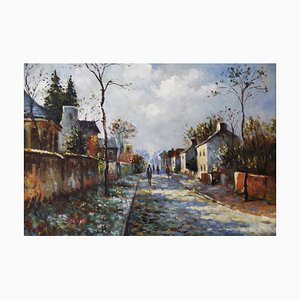


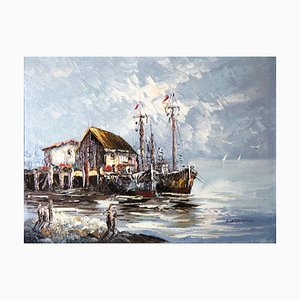

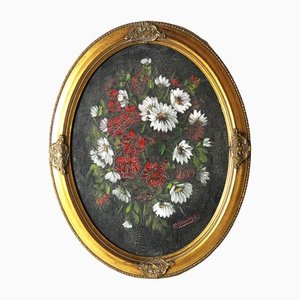


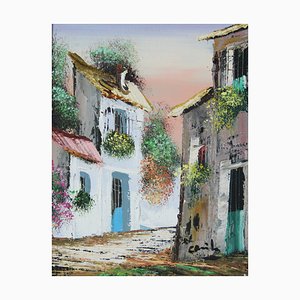
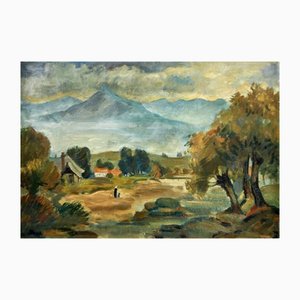





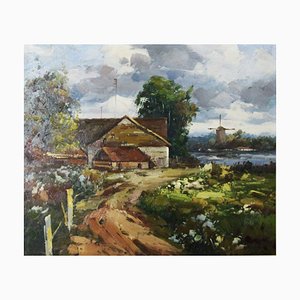



Get in Touch
Make An Offer
We noticed you are new to Pamono!
Please accept the Terms & Conditions and Privacy Policy
Get in Touch
Make An Offer
Almost There!
To follow your conversation on the platform, please complete the registration. To proceed with your offer on the platform, please complete the registration.Successful
Thanks for your inquiry, someone from our team will be in touch shortly
If you are a Design Professional, please apply here to get the benefits of the Pamono Trade Program